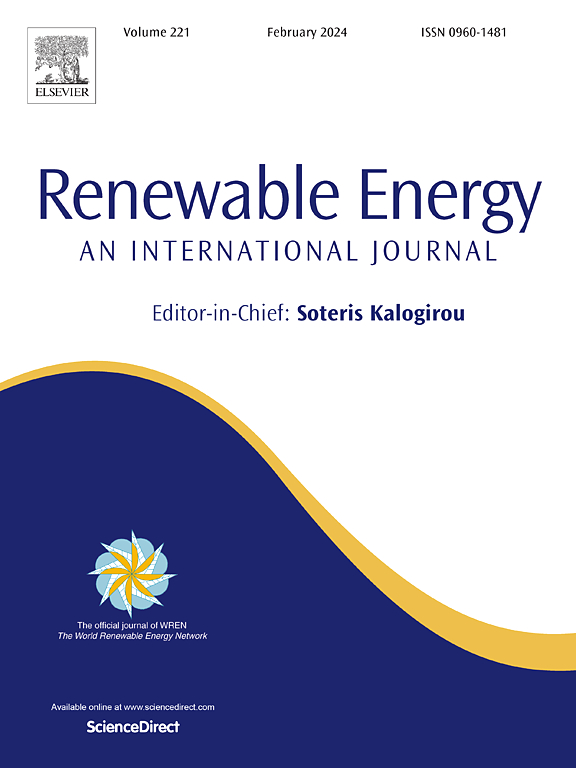Multi-objective optimization of geothermal heating systems based on thermal economy and environmental impact evaluation
IF 9
1区 工程技术
Q1 ENERGY & FUELS
引用次数: 0
Abstract
High-temperature geothermal resources are increasingly being explored as an alternative to coal and natural gas for space heating. In light of the growing demand for energy conservation and emission reduction, it is crucial to conduct a comprehensive evaluation of geothermal energy according to environmental impact and energy cost. Based on geothermal heating systems in Xi'an, China, this study develops a model involving the life cycle assessment (LCA) method to assess the borehole heat exchanger (BHE) in heating systems, encompassing carbon intensity (Cintensity). The response surface method was employed to optimize the drilling depth, operating flow, and pipe diameter ratio, which influences carbon intensity. The findings revealed that the minimum Cintensity is 24.11 g(CO2)·kWh−1, corresponding to a 4000 m burial depth, 20 m3 h−1 flow rate, and 0.54 diameter ratio. However, these results diverge from the minimum levelized cost of energy (LCOE) of $7.84/GJ, with 3912.8 m, 34.32 m3 h−1, and 0.64. A dual-objective optimization indicates the allocation of weights to the objective functions influences the optimal drilling depth (the optimal value is between 3920.51 m and 3921.62 m) and operating flow rate (ranging from 28.8 to 31.4 m3 h−1). The optimal outcomes for LCOE and Cintensity are contingent upon the decision-makers' weight allocation.
基于热经济和环境影响评估的地热供暖系统多目标优化
作为煤炭和天然气的替代品,高温地热资源正被越来越多地用于空间供暖。随着节能减排要求的不断提高,根据环境影响和能源成本对地热能进行综合评价至关重要。本研究以中国西安的地热供暖系统为基础,采用生命周期评估(LCA)方法建立了一个模型,用于评估供暖系统中的井孔换热器(BHE),包括碳强度(Cintensity)。采用响应面法对影响碳强度的钻孔深度、工作流量和管道直径比进行了优化。研究结果表明,最低碳强度为 24.11 g(CO2)-kWh-1,与 4000 米埋深、20 立方米/小时流量和 0.54 的管径比相对应。然而,这些结果与 3912.8 米、34.32 立方米/小时和 0.64 的最小平准化能源成本(LCOE)(7.84 美元/千焦耳)相去甚远。双目标优化表明,目标函数的权重分配会影响最佳钻井深度(最佳值介于 3920.51 米和 3921.62 米之间)和作业流量(介于 28.8 至 31.4 立方米/小时之间)。LCOE 和 Cintensity 的最佳结果取决于决策者的权重分配。
本文章由计算机程序翻译,如有差异,请以英文原文为准。
求助全文
约1分钟内获得全文
求助全文
来源期刊

Renewable Energy
工程技术-能源与燃料
CiteScore
18.40
自引率
9.20%
发文量
1955
审稿时长
6.6 months
期刊介绍:
Renewable Energy journal is dedicated to advancing knowledge and disseminating insights on various topics and technologies within renewable energy systems and components. Our mission is to support researchers, engineers, economists, manufacturers, NGOs, associations, and societies in staying updated on new developments in their respective fields and applying alternative energy solutions to current practices.
As an international, multidisciplinary journal in renewable energy engineering and research, we strive to be a premier peer-reviewed platform and a trusted source of original research and reviews in the field of renewable energy. Join us in our endeavor to drive innovation and progress in sustainable energy solutions.
 求助内容:
求助内容: 应助结果提醒方式:
应助结果提醒方式:


